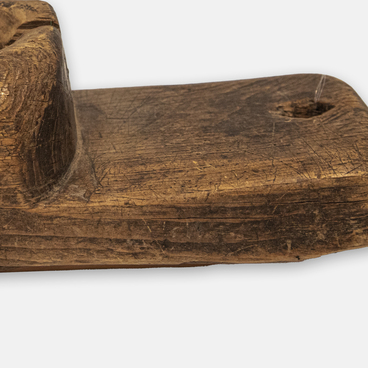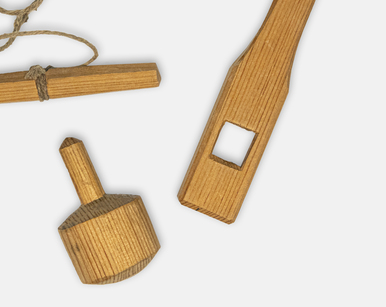In the 19th and early 20th centuries, various wedding rituals were widely practiced in the Nenets settlements in the European North. Their distinctive nature was determined by the nomadic lifestyle of the tundra dwellers and their main occupation — reindeer herding.
The Nenets had no special wedding outfits. The bride and groom wore traditional festive clothing, which differed from everyday clothes in the quality of the hides, the color of the furs, more detailed décor, beadwork, and colored threads.
In the Kanin Tundra, brides always wore a traditional headpiece — a “peyad”. It is a patch of brocade with colorful two-centimeter-wide cloth strips descending to the forehead. The peyad was worn on the forehead and tied at the back of the head with ribbons. Brides only wore the peyad inside the Nenets dwelling known as a chum and took it off when leaving the tent.
The bride’s headdress was also adorned with plait ornaments braided into the hair. In the European North, the bride wore a special headdress called a sudor. The groom’s outfit included fewer special elements: over a malitsa, he wore a bright cloth shirt, and over his left shoulder he tied a silk scarf.
In a clan system, it was customary to choose a bride from another clan to avoid incest and associated health issues. First, the bride’s parents were asked for permission to marry their daughter, and then they were paid a bride price. This custom has been preserved among the Nenets to this day. The amount of the bride price was determined by the age of the bride, her beauty, the nobility of the family, and the wealth of the father.
Wealthy reindeer herders would require a bride price of 200 reindeer, 50 Arctic foxes, dozens of red foxes, several furs of black and brown foxes and beavers, 30 meters of colored cloth, and several hundred rubles in silver or gold. For the Nenets of moderate means, the price included up to a hundred reindeer and several meters of colored cloth.
The wedding rites and attributes of the Nenets were
passed from generation to generation. They remained complex due to the way the
indigenous peoples treasured their traditions. When a child was born, the
family would soon begin to prepare for their future wedding.




